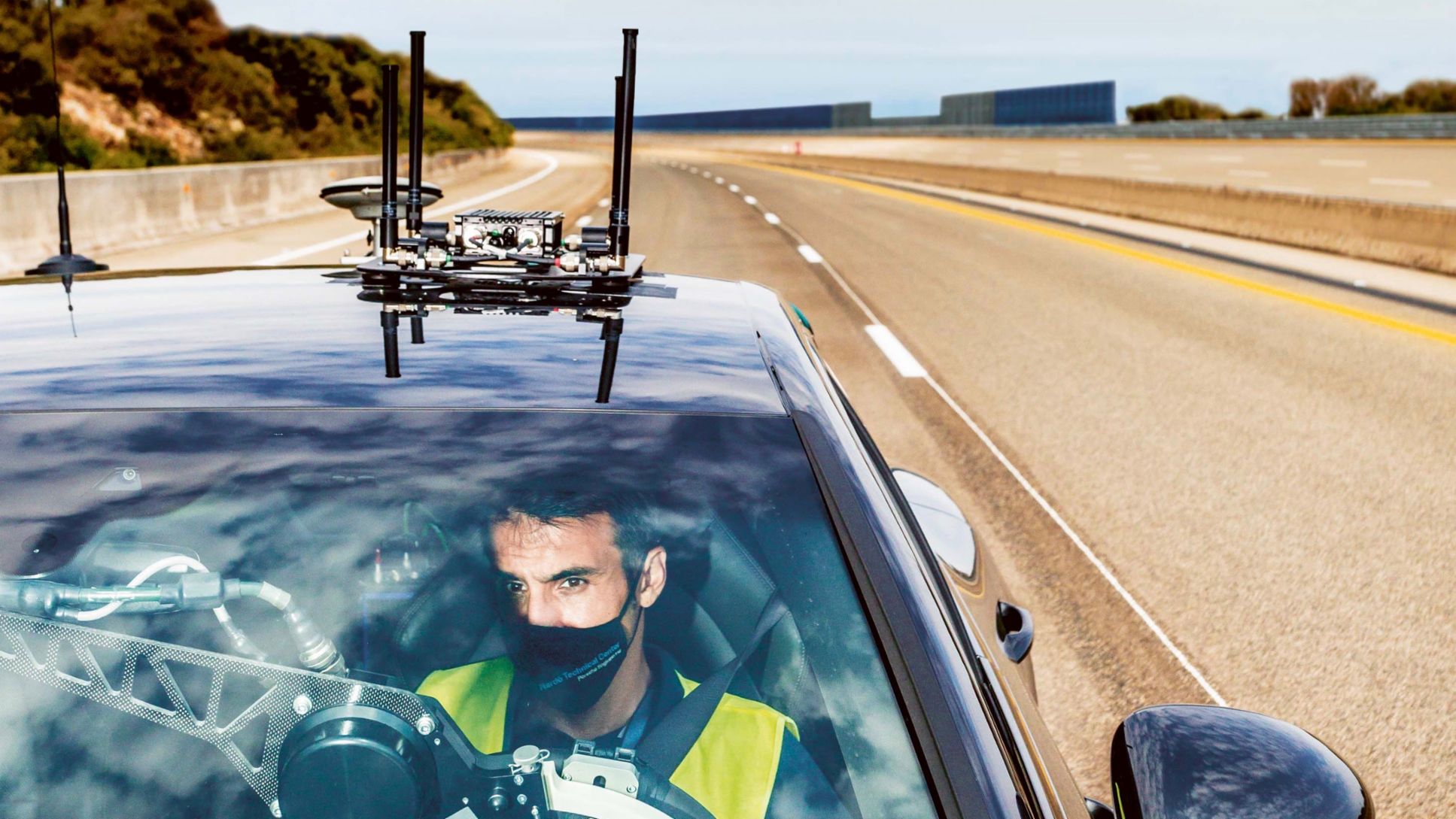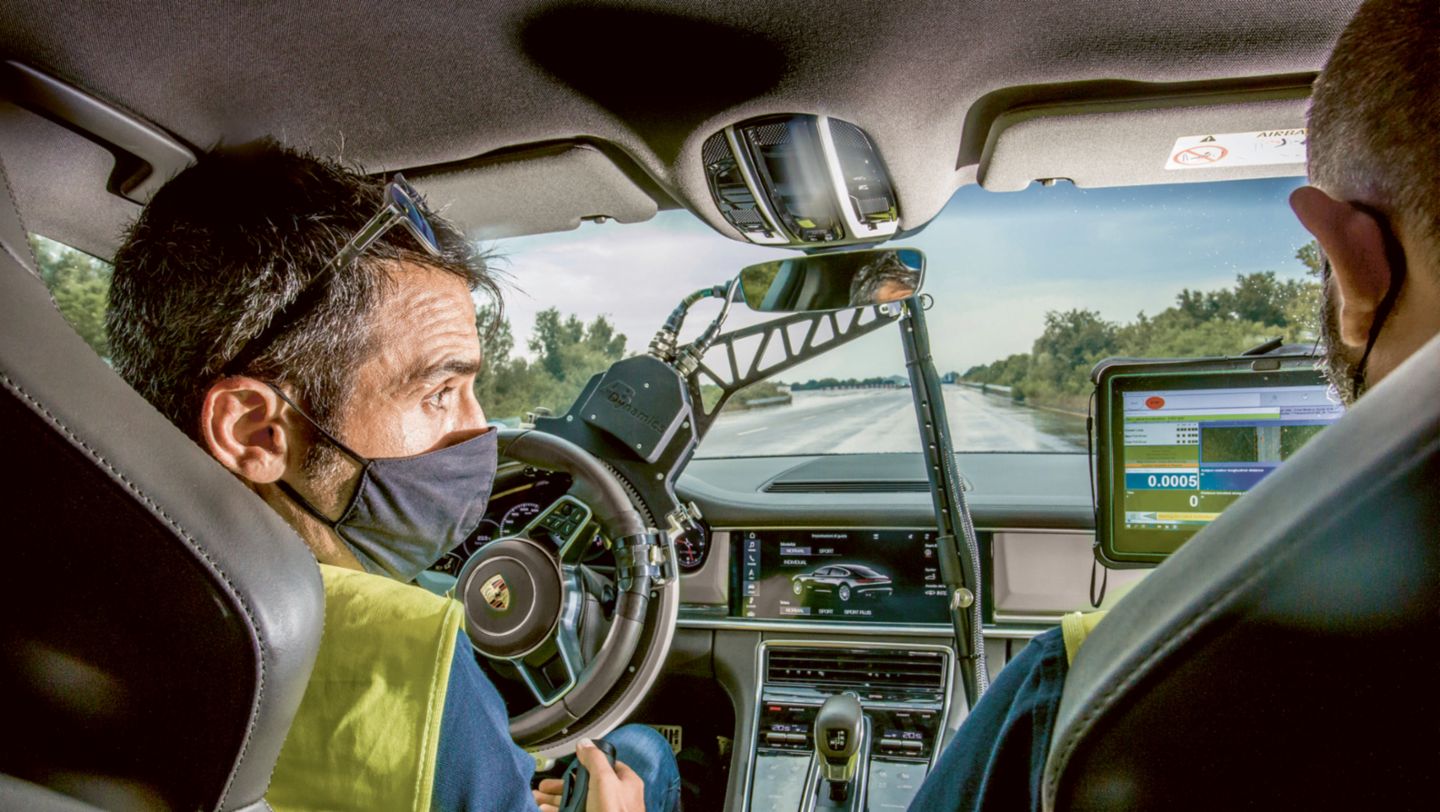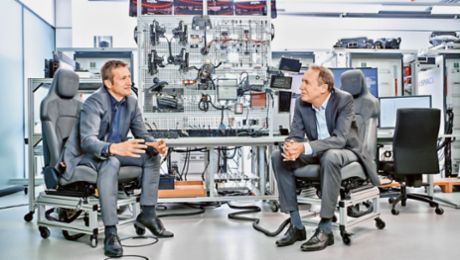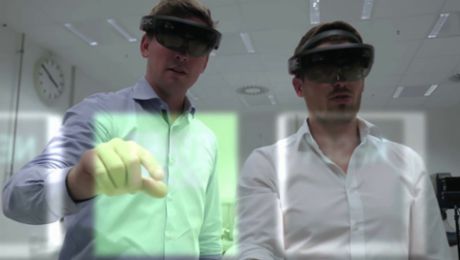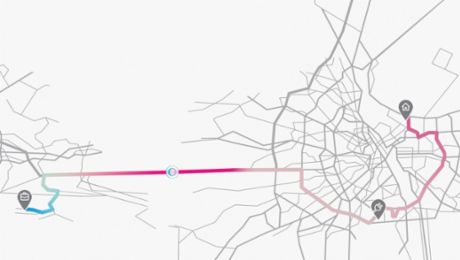“Test in three, two, one seconds,” says the voice from the radio. As soon as the countdown ends, a silver Porsche Cayenne immediately springs into action. But Mario Toledo, Test Engineer at Porsche Engineering, has neither his hands on the wheel nor his feet on the pedals. Instead, a driving robot is in command and ensuring that the car stays safely on track.
Together with the Cayenne, a grey Panamera is also on the Nardò Technical Centre’s (NTC) driving dynamics platform in southern Italy this morning. At the Porsche Engineering proving ground, engineers are now investigating the performance of autonomous driving functions. Toledo has printed out a whole stack of test scenarios on the tray above the dashboard, including driving in parallel lanes with sufficient distance between vehicles, changing lanes to the right or left, and avoiding an oncoming vehicle.
“A revolution is looming in the automotive industry”
Such tests for autonomous driving functions at SAE Level 4 (fully automated driving) are now part of everyday life at the NTC – this is where the mobility of tomorrow is tested until it is ready for series production. But continuous development of the NTC itself is also required: “A revolution is looming in the automotive industry over the next five to ten years, caused by trends such as autonomous driving, connectivity and e-mobility,” says NTC Managing Director Antonio Gratis. “We must adapt to this – with new infrastructure and new capabilities.”
What this means can be seen on the circuit of the test centre: the inner circular track, which in the past was used primarily for testing commercial vehicles, was given 48 kilometres of new road markings in 2020. Now part of it looks like a three-lane European motorway, while another part is set up as a three-lane US highway.

“The new road markings are crucial for us,” explains Davide Palermo, Manager of the ADAS Competence Centre. “Without them, tests for autonomous driving functions on SAE Level 4 would not be possible.” Together with his colleague Toledo and another test rider on a motorcycle, Palermo performs predefined manoeuvres and behaviours typically seen on a motorway: lane changes and driving in the centre lane with and without another road user ahead.
Efficient endurance tests with steering robots
In the future, some tests at the NTC might actually be carried out without any people at all: in February 2020, a Porsche Cayenne drove more than 600 kilometres at a maximum speed of 130 km/h on the circuit – without human intervention. During the endurance test, the steering wheel and pedals were operated by a steering robot, and a test driver was only on board for safety reasons. “This form of test automation promises higher efficiency and better reproducibility,” says Palermo. “But it cannot completely replace human drivers.”
In addition to the improvements to the test tracks, a further innovation is preparing the NTC circuit for what is to come. In the future, a fibre optic cable will act as a data backbone, connecting displays, traffic lights and transmitter masts along the route to enable communication between vehicles and the surrounding infrastructure (vehicle-to-infrastructure). To this end, the NTC has prepared the infrastructure for laying 91 kilometres of fibre optic cable around the circular track and the vehicle dynamics platform.
The NTC is also working on its own mobile communications infrastructure, which will enable further tests of autonomous driving functions and vehicle-to-vehicle communication. And in a few years’ time, ‘Sim City’ is set to join the new test area – a city with moving houses and traffic signs, in which different urban scenarios can be set up for testing advanced driver assistance systems (ADAS).
New asphalt on the circular track of the Nardò Technical Center
Antonio Leuzzi, Senior Manager Project Management, gives a practical demonstration of another upgrade at the circular track. “Do you notice any bumps?” he asks while driving around the 12.6- kilometre course at 297 km/h. “Last year we completely renewed the asphalt – and it is now so incredibly smooth that you don’t feel any vibrations even at high speeds. This is better for drivers and leads to more accurate results, for example in vibration measurements – especially important for electric vehicles with their inherently low noise levels.”
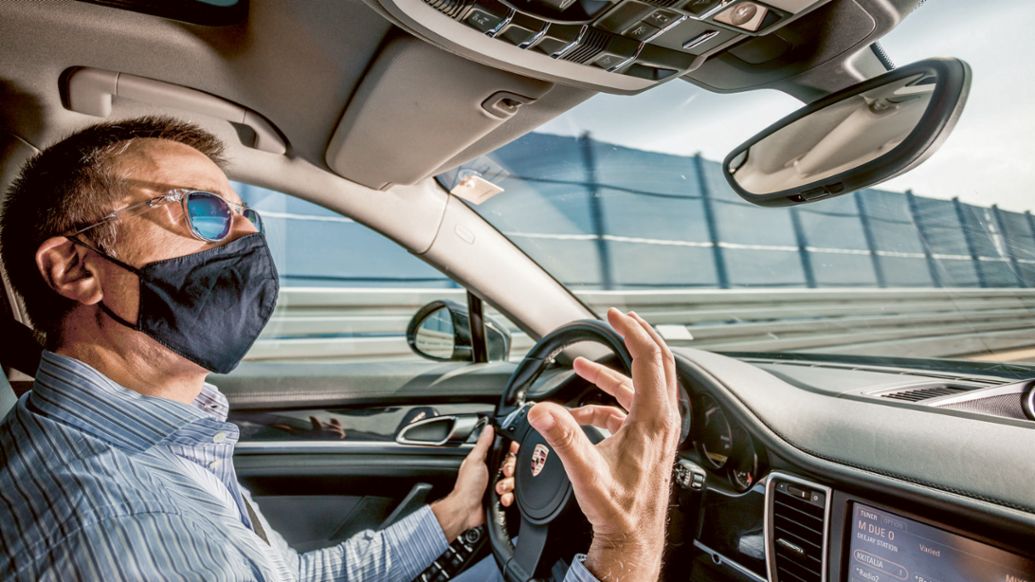
An investment in electric mobility is also located next to the workshop area of the NTC. Test centre customers can recharge their electrically powered test vehicles in the shortest possible time at two rapid charging stations developed by Porsche Engineering. There are six such HPC (High Power Charging) stations at the site, four of them with 920 volts and 320 kW, two with 950 volts and 350 kW. “The NTC should be like a city of the future,” explains Salvatore Baldi, Senior Manager Facilities Management. “That’s why we have installed all kinds of charging systems – from wall boxes with seven, 11 or 22 kW to 50 kW charging stations and HPC systems.”
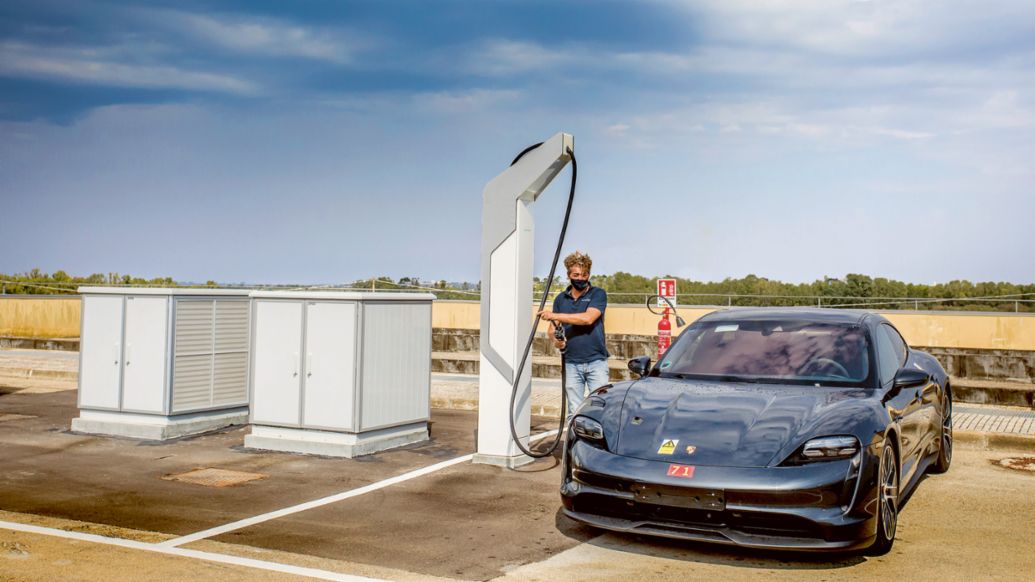
To put the vehicle batteries of the future through their paces, the NTC has also upgraded its fire test facilities. Tank systems have been tested here for more than ten years now, but the safety of lithium ion batteries is now increasingly coming to the fore. At the NTC, for example, they can be exposed to a flame of up to 700 degrees Celsius to put their fire resistance to the test. And should a dangerous situation arise during a test with an electric vehicle, a special container is available at the NTC fire station.
"There we can put electric cars and batteries in critical condition under a kind of quarantine,” says Baldi. “We pull them in with a winch and then close the container completely.” When the smoke detectors sound the alarm, the sprinkler system starts to reduce the flames in the initial phase of the fire. At the same time the flooding system is activated, which pumps 800 litres of water per minute at a pressure of six bar into the container. During the design and construction of the system, the NTC worked together with occupational safety experts from Denios.
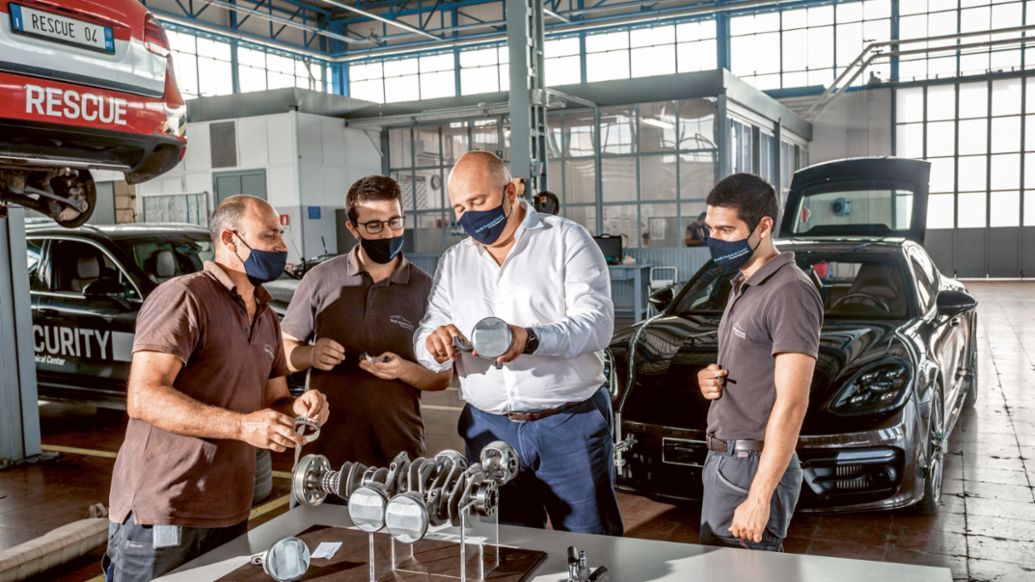
The NTC is also continuously working on the expansion of workshop capabilities and the renovation of existing spaces. By 2022, plans envision building 20 modular workshops that can be flexibly adapted to the needs of the users. In addition to the modernised technical infrastructure, customers will also be able to benefit from more extensive engineering services for their test vehicles. “So far, we have mainly rented out our testing grounds,” explains Gratis. “In the future we want to take on more turnkey projects: the customer brings their vehicle to the NTC and our team carries out all tests on site – right up to the final report and engineering recommendations. Customers benefit from reduced travel costs and greater efficiency because they get everything at the NTC from a single source.”
High-quality engineering services
To implement this plan, Pierpaolo Positano, Senior Manager Engineering, is expanding his team of more than 70 engineers, mechatronics engineers, technicians and drivers, adding new skills in areas such as ADAS and e-mobility. “We have gained a lot of experience in recent years, for example with reliability tests or tests on driving dynamics,” says Positano. “Now we are facing new challenges, which we are meeting with specialised groups of experts – for example for NVH (noise, vibration and harshness), ADAS and electric drives. In the future, we will not just be able to offer kilometres on our test tracks, but also our know-how – in other words, higher-value services for our customers. A magical mix of infrastructure and expertise awaits you.”
The NTC finds some of its experts through its close cooperation with universities. For example, Positano and Nildo Sestini, Senior Manager Human Resources, visited universities in southern and northern Italy and gave the students tasks they could have fun with.
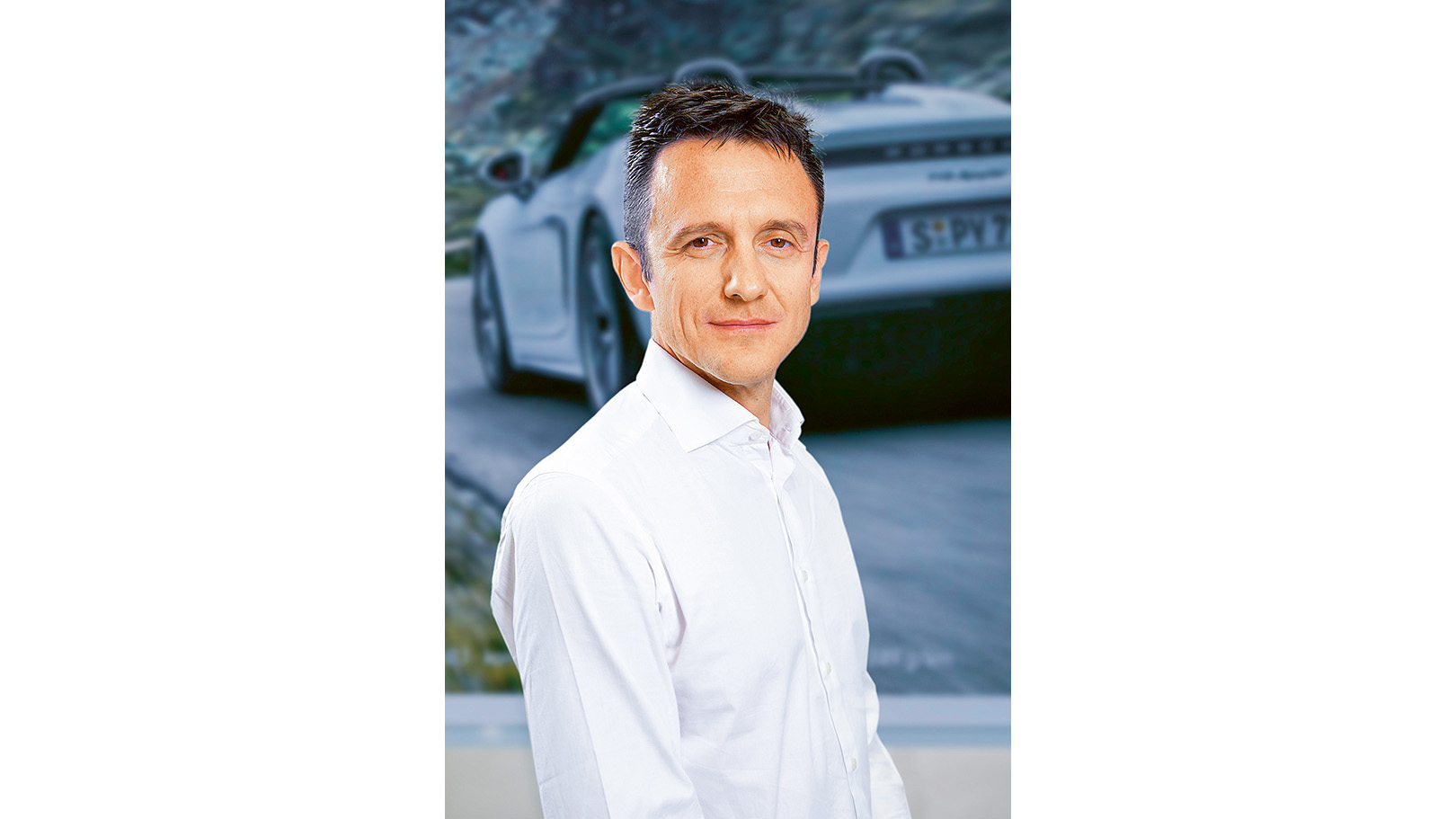
“We don’t just want to give a presentation, we want to enter into a dialogue with the young people,” says Sestini. Groups from universities regularly visit the NTC as well. “This is always a good opportunity to get to know each other better and find suitable candidates for us,” says Sestini. “We offer promising students an internship for a period of time designed to allow them to gain experience and competence and to contribute to our centre.”
NTC’s growing appeal
Content-related collaboration with the universities in Lecce (vehicle dynamics), Bari (batteries and battery management systems), Florence (ADAS and autonomous driving) and Naples (vehicle and motorcycle dynamics) also results in regular contacts with top young talents. Sestini believes in the NTC’s growing appeal to bright minds: “Those who work for us are part of a great adventure: the transformation of the automotive sector.”
Participants in Formula Student are considered particularly promising talents in the automotive industry. The NTC sponsors a team from the University of Lecce, but does not regard its commitment as a mere recruiting measure – the test centre also wants to make a contribution to development in southern Italy. “Our commitment to Formula Student and in other areas fosters the growth not only of the NTC, but of the entire region,” says Sestini. “We therefore want to integrate ourselves even more strongly into the ecosystem around us. This includes schools, universities and local institutions.”
“We are continuously developing our infrastructure, our expertise and our team,” concludes Gratis. “We always keep an eye on the megatrends in the automotive industry. And just as new technologies will soon revolutionise the driving experience, our test centre is also moving into a new future. The NTC 2.0 is fast approaching.”
In brief
Porsche Engineering’s long-established Nardò Technical Centre is investing in new infrastructure and its engineering capacities. The aim is to be able to offer NTC customers a comprehensive range of services – always oriented towards automotive megatrends such as autonomous driving, connected vehicles and e-mobility.
Info
Text: Christian Buck
Contributros: Antonio Gratis, Roberto Buttazzi, Pierpaolo Positano
Photos: Theodor Barth
Text first published in the Porsche Engineering Magazine, issue 1/2021
